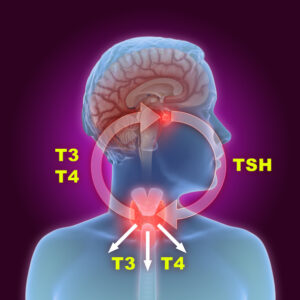INTRAUTERINE FETAL DEATH
- The fetal death related to maternal (5-10%) , placental (20-35%), fetal (25-40%) complications
- Such complication may be chronic or acute to produce placental insufficiency
- 25-35% cases cause remains unknown
CAUSES OF INTRAUTERINE FETAL DEATH :
The causes of intrauterine fetal death (IUFD), or stillbirth, can be diverse and multifactorial. Some common causes include:
- Placental Problems:
- Placental insufficiency or placental abruption (detachment of the placenta from the uterus).
- Placental infarction (blockage of blood flow within the placenta).
- Placental infections.
- Antepartum hemorrhage
- Cord accident
- Twin to twin transfusion
- Maternal Health Conditions:
- Diabetes mellitus, particularly if poorly controlled (gestational or pre-existing).
- Hypertensive disorders such as preeclampsia and eclampsia.
- Autoimmune disorders.
- Thyroid disorders.
- Hyperpyrexia
- Antiphospholipid syndromes
- Thrombophilias
- Abnormal labor
- Systemic lupus erythematous
- Fetal Factors:
- Genetic abnormalities or congenital anomalies.
- Intrauterine growth restriction (IUGR) leading to severe growth retardation.
- Fetal infections (e.g., cytomegalovirus, toxoplasmosis).
- Umbilical cord accidents (e.g., cord prolapse, cord around the neck).
- Fetal-maternal hemorrhage.
- Infections:
- Maternal infections (e.g., bacterial infections such as Group B Streptococcus, viral infections like Zika virus or herpes simplex virus).
- Fetal infections (as mentioned above).
- Environmental Factors:
- Exposure to toxins or chemicals.
- Smoking or substance abuse by the mother.
- Unknown Causes (Idiopathic):
- In some cases, despite thorough investigation, the exact cause of IUFD may not be identified.
SIGN AND SYMPTOMS :
Signs that may indicate intrauterine fetal death (IUFD) include:
- Decreased Fetal Movements:
- One of the earliest signs that might lead to suspicion of IUFD is decreased or absent fetal movements. Normally active fetuses that suddenly become inactive or show significantly reduced movements may indicate a problem.
- Absence of Fetal Heartbeat:
- A fetal heartbeat can typically be detected using Doppler ultrasound or fetal monitoring devices. The absence of a detectable heartbeat during routine monitoring or check-ups is a significant sign of IUFD.
- Failure to Detect Fetal Heart Tones:
- During prenatal visits, healthcare providers routinely listen for fetal heart tones using a Doppler or fetal stethoscope. In IUFD, no fetal heart tones will be heard.
- Lack of Fetal Growth:
- In some cases, IUFD may be associated with intrauterine growth restriction (IUGR), where the fetus fails to grow adequately according to expected gestational age.
- Absence of Fetal Movement in Response to Stimuli:
- Normally, a fetus will respond to external stimuli, such as sound or touch, by moving. In IUFD, there may be no movement in response to such stimuli.
- No Fetal Heartbeat on Ultrasound:
- Ultrasound imaging is a critical diagnostic tool for detecting IUFD. If an ultrasound scan shows no visible fetal heartbeat, despite attempts to locate it, this is a strong indicator of IUFD.
SYMPTOMS :
Symptoms of intrauterine fetal death (IUFD), potential symptoms that may indicate IUFD include:
- Decreased Fetal Movements: A noticeable decrease in fetal movements or a sudden cessation of movements that were previously regular and active.
- No Fetal Heartbeat: During routine prenatal appointments, a healthcare provider may not be able to detect a fetal heartbeat using a Doppler device or fetal monitoring equipment.
- No Fetal Heart Tones: Healthcare providers may use a Doppler ultrasound or a fetoscope to listen for fetal heart tones during prenatal visits. In cases of IUFD, these heart tones will not be detectable.
- Uterine Size Not Increasing: Lack of expected growth in the size of the uterus, which may suggest that the fetus has stopped growing.
- Vaginal Bleeding or Discharge: While not always present, some women may experience vaginal bleeding or a noticeable discharge that could indicate complications leading to IUFD.
- Uterine Contractions: Women may experience uterine contractions that do not lead to labor, which can sometimes be a sign of IUFD.
COMPLICATION OF INTRAUTERINE FETAL DEATH :
- Infection
- Post partum hemorrhage
- Retained placenta
- Abruption
- DIC
- Shock
- Renal failure
- Sepsis
- Maternal death
DIAGNOSIS (INVESTIGATIONS ) :
Diagnosing intrauterine fetal death (IUFD) typically involves the following steps:
- Clinical Evaluation:
- The diagnosis may be suspected if the mother reports decreased fetal movements or other concerning symptoms.
- The healthcare provider will perform a physical examination of the mother to assess for signs such as absence of fetal heartbeat or uterine size consistent with the gestational age.
- Ultrasound Examination:
- An ultrasound scan is the primary tool used to confirm IUFD. It will show absence of fetal heartbeat and lack of fetal movements.
- Ultrasound may also help assess fetal size and detect any structural abnormalities that could indicate a cause of death.
- Doppler Studies:
- Doppler ultrasound may be used to assess blood flow in the umbilical cord and fetal blood vessels. Abnormalities in blood flow patterns can sometimes indicate problems like placental insufficiency.
- Laboratory Tests:
- Blood tests may be performed to check for infections in the mother that could have contributed to the IUFD.
- Genetic testing may be considered if there are concerns about genetic abnormalities contributing to the fetal death.
- Other Imaging Techniques:
- In some cases, additional imaging techniques such as MRI (Magnetic Resonance Imaging) may be used to further investigate any suspected structural abnormalities.
- Monitoring over Time:
- In situations where IUFD is suspected but not immediately confirmed, the healthcare provider may recommend monitoring over time to observe for changes in fetal status or to confirm the absence of fetal heartbeat.
MANAGEMENT OF INTRAUTERINE FETAL DEATH :
The management of intrauterine fetal death (IUFD), involves several key aspects aimed at addressing both the physical and emotional needs of the parents. Here are the primary components of IUFD management:
- Confirmation of IUFD:
- Once IUFD is suspected based on clinical signs or symptoms, it is confirmed through ultrasound to detect the absence of fetal heartbeat and/or other diagnostic tests as necessary.
- Delivery Planning:
- Delivery options are discussed with the parents, typically aiming for induction of labor unless there are specific medical reasons for cesarean delivery.
- The timing of delivery is usually influenced by factors such as gestational age, maternal health, and the parents’ emotional readiness.
- Medical and Psychological Support:
- Emotional support is crucial and should be provided by healthcare professionals, including counselors or support groups specializing in perinatal loss.
- Parents are informed about what to expect during labor, delivery, and postpartum recovery.
- Evaluation and Investigation:
- After delivery, the baby is examined to try to determine the cause of death, which may involve placental examination, genetic testing, and other investigations as appropriate.
- Maternal health may also be evaluated to identify any underlying conditions that could have contributed to IUFD.
- Bereavement Care:
- Compassionate care and support are essential for parents experiencing the loss of their baby. This may include providing memory-making opportunities (e.g., photographs, handprints, footprints), allowing time for bonding, and facilitating rituals or ceremonies as desired by the parents.
- Future Pregnancy Planning:
- Discussions about future pregnancies are important, including reviewing any potential risks or preventive measures that could be taken to reduce the likelihood of recurrence.
- Referrals to specialists may be made for genetic counseling or additional testing depending on the findings from the evaluation.
- Follow-Up Care:
- Postpartum follow-up is essential to monitor physical recovery and emotional well-being.
- Long-term support may be needed to help parents cope with grief and adjust to life after loss.
PREVENTION OF INTRAUTERINE FETAL DEATH :
Preventing intrauterine fetal death (IUFD), involves addressing various risk factors and ensuring optimal prenatal care…….
- Preconception Care:
- Encourage women to achieve and maintain a healthy weight before pregnancy.
- Manage chronic medical conditions such as diabetes, hypertension, and thyroid disorders before conception.
- Screen and treat infections such as sexually transmitted infections (STIs) before pregnancy.
- Prenatal Care:
- Early and regular prenatal care is crucial to monitor fetal growth, detect any complications early, and manage maternal health conditions effectively.
- Routine ultrasound examinations and Doppler studies can help assess fetal growth, placental function, and detect any abnormalities.
- Monitoring Fetal Movements:
- Educate pregnant women about monitoring fetal movements and encourage them to seek medical attention promptly if there is a decrease in fetal activity.
- Management of Maternal Health Conditions:
- Manage gestational diabetes, hypertension, and other maternal medical conditions rigorously during pregnancy to reduce the risk of complications that could lead to IUFD.
- Avoidance of Environmental Risks:
- Advise pregnant women to avoid smoking, alcohol, illicit drugs, and exposure to toxins or environmental pollutants.
- Management of High-Risk Pregnancies:
- Identify pregnancies at higher risk for IUFD due to factors such as advanced maternal age, multiple gestation, or previous history of stillbirth.
- Consider additional monitoring and interventions as appropriate based on individual risk factors.
- Education and Counseling:
- Educate women about the signs and symptoms of pregnancy complications and the importance of seeking prompt medical attention.
- Provide counseling and support for couples who have experienced a previous stillbirth to address their concerns and optimize future pregnancies.
- Research and Advocacy:
- Support ongoing research into the causes and prevention of stillbirth.
- Advocate for policies and practices that promote maternal and fetal health, including access to quality healthcare services and resources.
By addressing these strategies comprehensively, healthcare providers can work towards reducing the incidence of IUFD and improving outcomes for pregnant women and their babies. Each pregnancy should be managed individually, taking into account specific risk factors and medical history to provide personalized care and minimize the risk of Intrauterine fetal death



